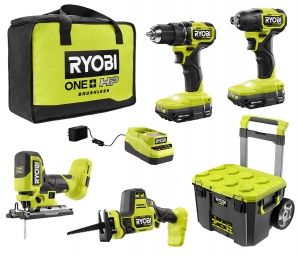Guide to Hanging on Masonry Walls
Ever wondered how to hang that picture frame or shelf on a brick or concrete wall? It can seem daunting, but with the right tools and techniques, it's a straightforward DIY project. This guide breaks down two common methods: using concrete screws and using anchors, making it easy for you to tackle your next hanging project.
When it comes to home improvement projects, the right hardware can make all the difference. Concrete screws and anchors are essential components for securing items to masonry surfaces like concrete, brick, or stone. Whether you're mounting a shelf, hanging a picture, or installing a new fixture, understanding how to use these tools can help you achieve a secure and professional finish. This guide will walk you through everything you need to know about concrete screws and anchors, from selecting the right type to proper installation techniques.
Understanding Concrete Screws vs Anchors
Concrete Screws: These are specially designed screws that can be directly driven into masonry materials without the need for an anchor. They are typically made of hardened steel and feature a unique thread pattern that allows them to bite into concrete or brick. Concrete screws offer a strong and reliable hold, perfect for heavier items. Even more secure is drilling into the masonry rather than the mortar.
Concrete Anchors: Also known as masonry anchors, these are used to provide a secure hold in materials that are not easily penetrated by screws alone. Anchors expand within the hole to grip the sides tightly, providing a stable base for the screw.
Selecting the Right Screws and Anchors
Consider the following factors when choosing the appropriate screws and anchors for your project:
- Load Capacity: Determine the weight of the item you're securing and choose anchors that can handle the load.
- Environment: For outdoor or wet environments, select screws and anchors with rust-resistant coatings.
- Base Material: Ensure the screws and anchors are suitable for the type of masonry material you're working with.
- Diameter and Length: Match the screw and anchor size to the thickness of the material and the depth of the hole.
What tools do I need?
Before you begin, gather your supplies. The star of the show is a hammer drill. Unlike a regular drill, a hammer drill combines rotary drilling with a hammering action, allowing it to effectively penetrate tough materials like concrete and brick. You'll also need masonry drill bits, specifically designed for drilling into masonry. These bits usually come with the screws or anchors you purchase, or the packaging will clearly indicate the correct size. Finally, don't forget ear protection – hammer drills can be quite loud.
How to use a concrete screw?
- Planning and Marking: Decide where you want to hang your item. Consider whether you'll be drilling into the mortar joint (the softer material between bricks) or the solid material itself. Drilling into the mortar joint is easier and easier to repair while drilling into the solid material provides a stronger hold, ideal for heavier items like mirrors. Mark the desired location for your hole.
- Drilling the Pilot Hole: Attach the masonry drill bit to your hammer drill. A helpful tip is to wrap a piece of tape around the drill bit to mark the depth equivalent to the length of your concrete screw. This prevents you from drilling too deep. Switch the drill to hammer mode and carefully drill the pilot hole until you reach the tape marker.
- Securing the Hook: Once the hole is drilled, simply insert and tighten the concrete screw, attaching your hook or hanging hardware.
How to use a concrete anchor?
Plastic anchors are a familiar sight in many households and offer a versatile way to hang lighter items on masonry walls. Here's the process:
- Drilling the Pilot Hole: Just like with concrete screws, mark your desired location and drill a pilot hole using the hammer drill and masonry bit. Use the tape trick to mark the correct depth.
- Inserting the Anchor: Tap the plastic anchor into the drilled hole. It should fit snugly.
- Attaching the Hook: Insert the screw through your hook or hanging hardware and into the anchor. As you tighten the screw, the anchor expands within the hole, creating a secure hold.
Finishing Touches:
With both methods, the key is to drill to the correct depth and ensure the screw or anchor is securely in place. Once you've installed your hooks or hanging hardware, all that's left is to hang your item and enjoy your newly decorated space!
Tips for Using Masonry Screws and/or Masonry Anchors:
Choose the Right Hardware: Select screws and anchors appropriate for the weight of the item you're hanging. If you're unsure, consult the packaging or a hardware store expert.
Don't Over-tighten: Be careful not to over-tighten screws, as this can strip the threads or damage the anchor.
Hanging items whether they are heavy objects or on masonry walls doesn't have to be intimidating. By following these simple steps and using the right tools, you can confidently hang what you desire.
Recommended Articles

The How’s and Why’s of Upgrading a Central AC System
A step-by-step video demonstration showing removal and replacement of a central air conditioning system. Includes advantages of new, state-of the-art AC systems.

If You’ve Got a Project That Involves Demolition, You’ll Want to Know About This Tool.
I try out a new tool designed and engineered to do one task exceptionally well -- demolition.
